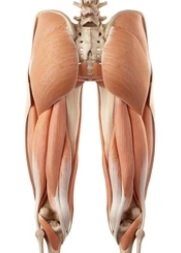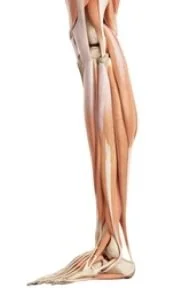Muscles of the Lower Limbs
The lower limbs are designed to provide stability and minimum muscular activity when the individual is standing.
Standing at ease can be described as:
The hip joint is at its most stable position, the extension of the thigh makes the ligaments stand taut
The knee joint is at its most stable position, the center of gravity lies anterior to the knee to allow for extension
Forward swaying occurs as the center of gravity is anterior to the leg
Lateral swaying is countered by hip abductors through the iliotibial tract
Walking can be described as:
Heel strike occurs when the tibialis anterior muscle contracts to lower the forefoot to the ground
Push-off (midstance) occurs when the gastrocnemius and soleus muscles plantarflex the foot
Swing phase occurs when the iliopsoas and rectus femoris muscles flex the hip and the knee follows through with momentum, the tibialis anterior is then able to dorsiflex to clear the foot off of the ground
Swing phase continues against gravity (uphill) when the quadriceps femoris muscle contracts to extend the knee
The arches of both feet are continuously supported by left muscles
The muscles in this region typically ac to stabilize the upper body and pelvis, and aidi movement. These muscles also allow for abduction and extension of the thigh, with some adduction, external rotation and internal rotation of the thigh.
The muscles in this region largely act to extend the leg at the knee joint.
The muscles in this region largely act to adduct the leg and protect the neurovascular structures passing from the hip joint to the knee and lower leg
The muscles in this region largely act to stabilize the knee and pelvis.
The muscles in this region aid movement such as walking, and running.






